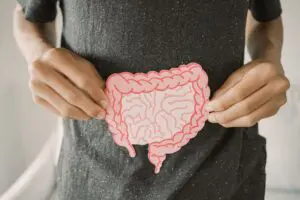By Ross Pelton, RPh, PhD, CCN
Scientific Director, Essential Formulas
Polyphenols are a large class of plant-based compounds that occur naturally in fruits, vegetables, herbs, spices tea, dark chocolate, and wine. Over 8,000 polyphenols have been identified in nature. i Many of these naturally occurring polyphenolic compounds have been shown to provide a wide range of health benefits when ingested by humans. However, many polyphenols are large molecules that are poorly absorbed. Hence, the mechanism of how many dietary polyphenols exert their health benefits has remained a mystery.
Dramatic advances in gene sequencing technologies and the science of metabolomics are furthering scientists’ understanding of the trillions of bacteria that live in and on the human body, known as the microbiome. Metabolomics is the study of small molecules called metabolites in bodily fluids, tissue, and breath exhalation, which are helping scientists better understand metabolism. Researchers are starting to unravel the ‘mystery’ of how polyphenols provide their health benefits to humans. The answer has to do with the gut microbiome.
Because many polyphenols are poorly absorbed, they pass through the small intestines and arrive in the colon undigested. In many cases, colonic probiotic bacteria transform polyphenols into biologically active metabolites. Thus, interactions between dietary probiotic bacteria and polyphenols are an important new area or scientific research. ii
Studies are increasingly reporting a significant two-way interaction between polyphenols and gut probiotic bacteria. Polyphenols can serve as prebiotic foods that promote the growth and proliferation of probiotic bacteria and suppress growth of disease-causing, or pathogenic, bacteria. Similarly, some strains of probiotic bacteria convert polyphenols into postbiotic metabolites that have significant health benefits, such as reducing the risks of obesity, cardiovascular, and other related metabolic diseases. iii
Studies on polyphenols indicate that in some cases, their health benefits are due to bioactive postbiotic metabolites that are created by probiotic bacteria. Recent studies report that many of the polyphenol postbiotic metabolites provide more biological activity and health benefits than the original nutrient consumed. iv
Examples of dietary polyphenols that are converted into biologically active postbiotic metabolites include the following:
- Rutin and quercetin are commonly found in most fruits and vegetables. v
- Genistein and daidzein are phytoestrogens that primarily occur in soybeans and soy-based products. Both compounds are converted into metabolites that are more readily used as precursors to human hormones and active co-factors for better health.
- Curcumin undergoes biotransformation by gut bacteria into a range of bioactive metabolites. vi
- Green tea is one of the most popular beverages globally, and regular consumption leads to many health benefits including improvements in cardiovascular health, energy levels, etc. The polyphenols in green tea are metabolized by gut bacteria into postbiotic metabolites with strong antioxidant, anti-proliferative and anti-inflammatory activities. vii
The human gut microbiome plays a vital role in the metabolism of the chemical compounds that occur in food. In many cases, bacterial metabolism reduces the activity of dietary compounds. However, scientists have now established that dietary fibers, which serve as “food” for probiotic bacteria, get converted into important health-regulating compounds referred to as postbiotic metabolites.
Scientists are now realizing that probiotic bacteria also metabolize non-fiber dietary compounds such as polyphenols into health-promoting postbiotic metabolites. Now more than ever, researchers are realizing the importance of eating a wide range of plant-based foods. Most plant-based foods provide both fiber and polyphenols. Probiotic bacteria convert these into postbiotic metabolites, which have many health-promoting benefits.






